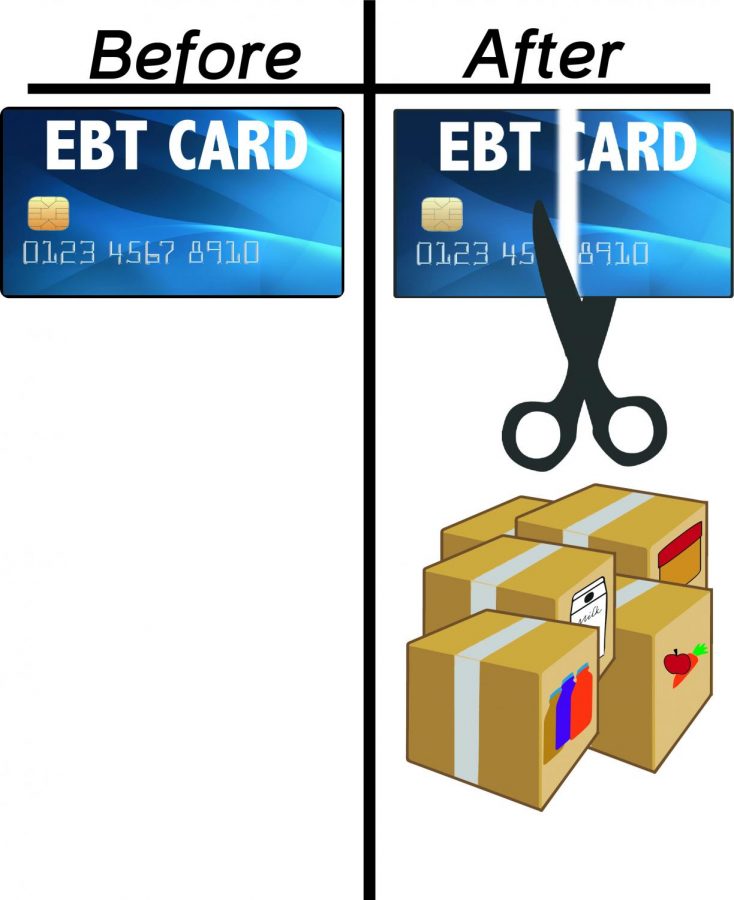Food box could take food off tables for SNAP beneficiaries
Food box could take food off tables for SNAP beneficiaries
February 26, 2018
Food assistance program beneficiaries may soon be receiving boxes of food and a reduced ability to make purchases themselves because of a budget proposal that could be detrimental to their health, according to experts.
A proposal to save an estimated $129 billion over 10 years in the U.S. 2019 fiscal year budget would create the USDA Harvest Box, a food box that would replace half of some Supplemental Nutrition Assistance recipients’ benefits.
The food would be selected without participants’ guidance and would include items such as shelf-stable milk, juice, grains, ready-to-eat cereals, pasta, peanut butter, beans, canned meat, poultry or fish, and canned fruits and vegetables.
“Any cut to the SNAP program would be incredibly devastating to our hungry neighbors,” said Paul Morello, senior manager of public relations at the Greater Chicago Food Depository. “The logistics required to implement this program [effectively] would be monumental to overcome.”
The Greater Chicago Food Depository serves about 812,000 individuals in Cook County each year, according to Morello. For every meal they provide, SNAP programs provide 12 meals to families in need, he added.
If approved, the USDA Harvest Boxes would only be distributed to individuals on SNAP receiving more than $90 a month in benefits, which is an estimated 81 percent of recipients.
“If that cut does go into effect, it’s definitely going to affect how people are getting food. It’s going to take food off of people’s plates,” Morello said. “Food banks are efficient and effective, but we simply would not be able to make up that gap [left by the budget cut].”
The proposal is a radical change that would be a burden to individuals in need, said Elizabeth Wolkomir, senior policy analyst at the Center on Budget and Policy Priorities, a Washington, D.C.,-based progressive think tank.
“Instead of going to the store, a working mom would have to figure out how she would pick up a box of food that [is] maybe only available during certain windows or much farther away from her home,” Wolkomir said.
Along with potential cuts to the SNAP program, the USDA Harvest Box proposal has received criticism about the lack of options and nutritional value it may provide.
More clarity about what these food boxes are going to contain is needed, said Cindy Leung, assistant professor in the Department of Nutritional Sciences at the University of Michigan.
“For example, it said it would include ready-to-eat cereal; does that mean cereals that are heavy in added sugar or cereal fortified with a lot of vitamins and minerals?” Leung said. “Even for one food like cereal, there’s a huge variety.”
Specific contents of the food boxes are unknown at this point, but Leung said the food should be high in whole grains, low in sodium and provide other nutritional benefits. The boxes should also include foods that are already consumed by SNAP participants and are culturally accepted across many backgrounds, so they do not cause any drastic changes in recipients’ lifestyles or diets, she added.
“I’m not sure why we would walk away from a program that has helped curb the problem of hunger and has effectively targeted poverty in this country for decades,” Wolkomir said.








